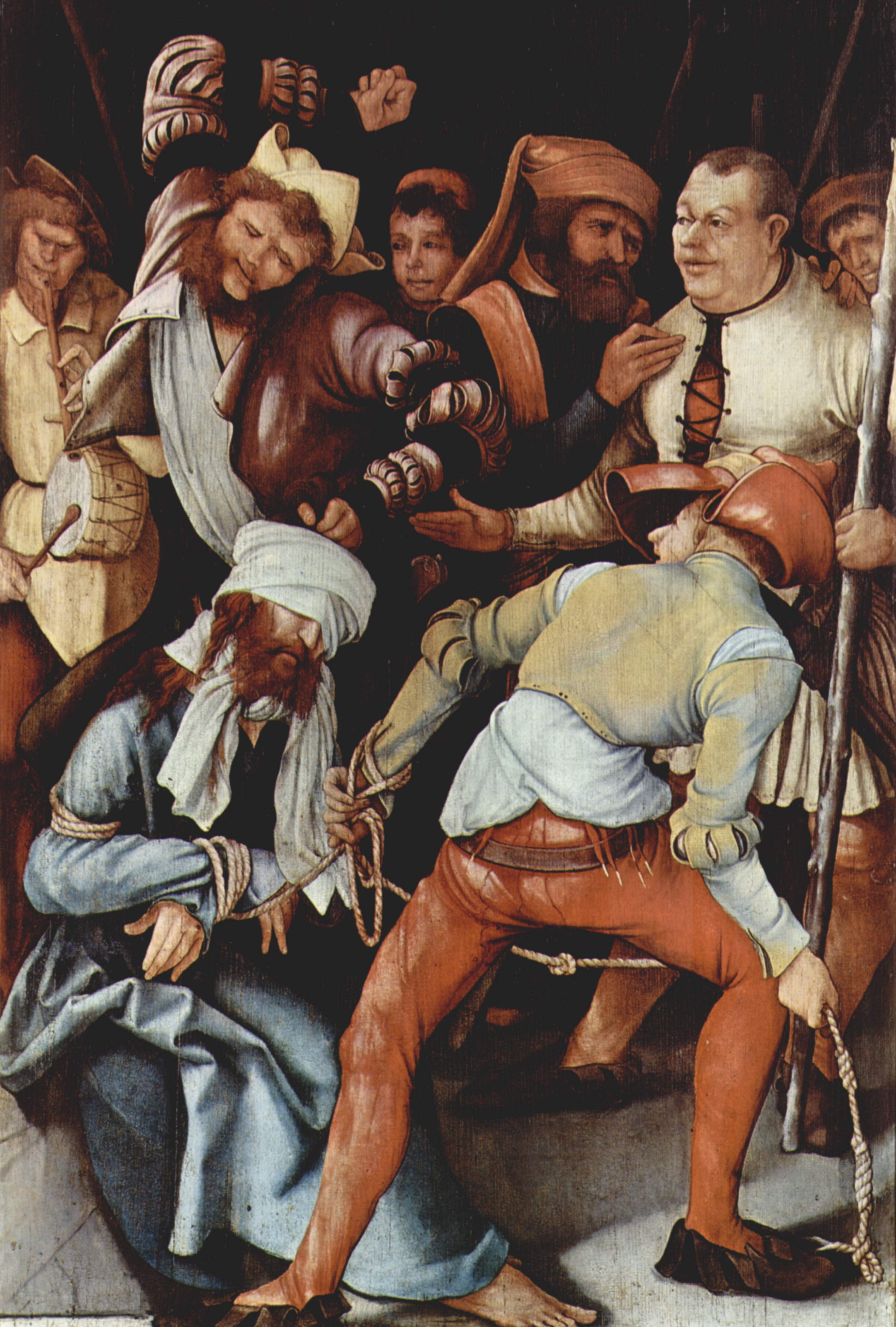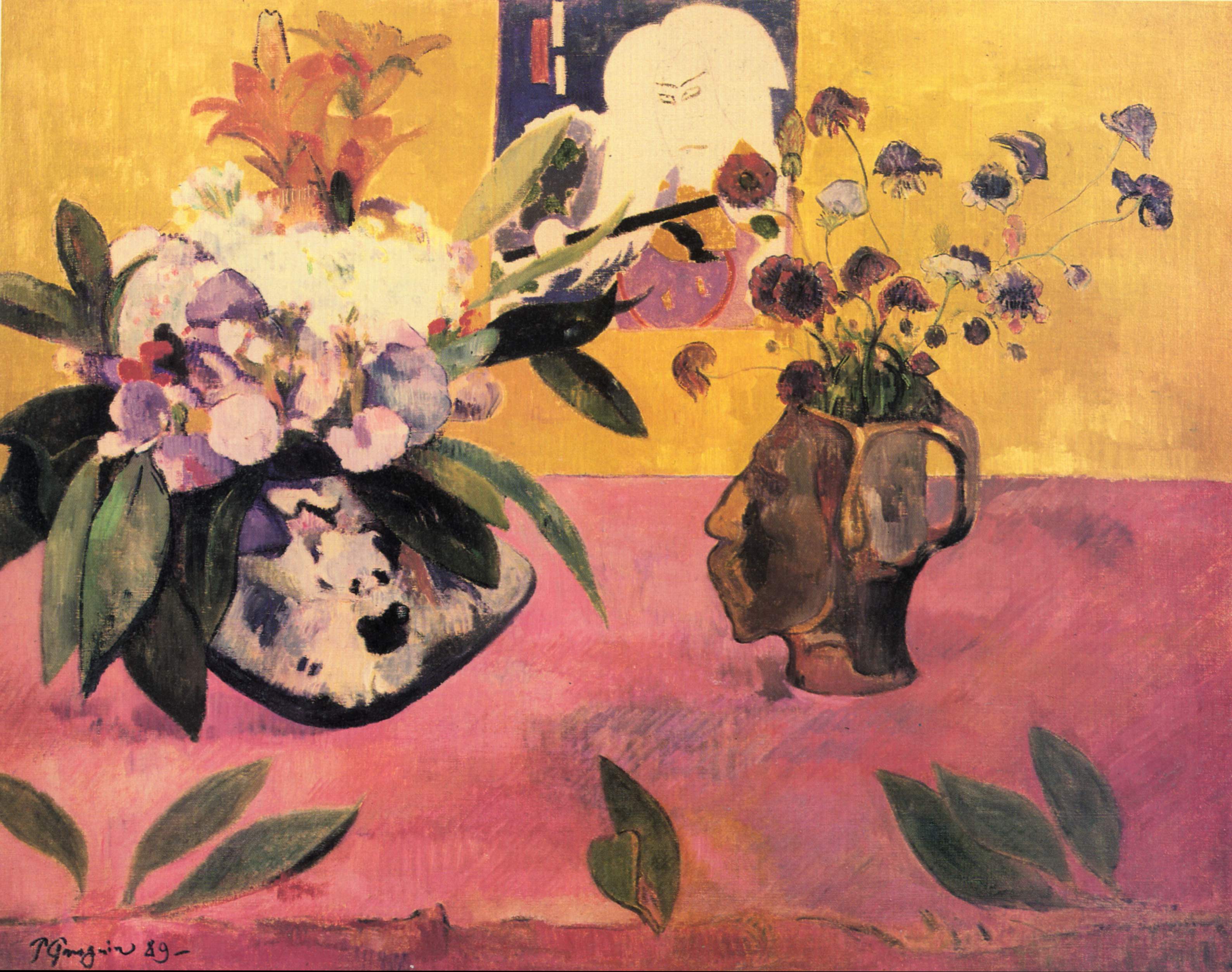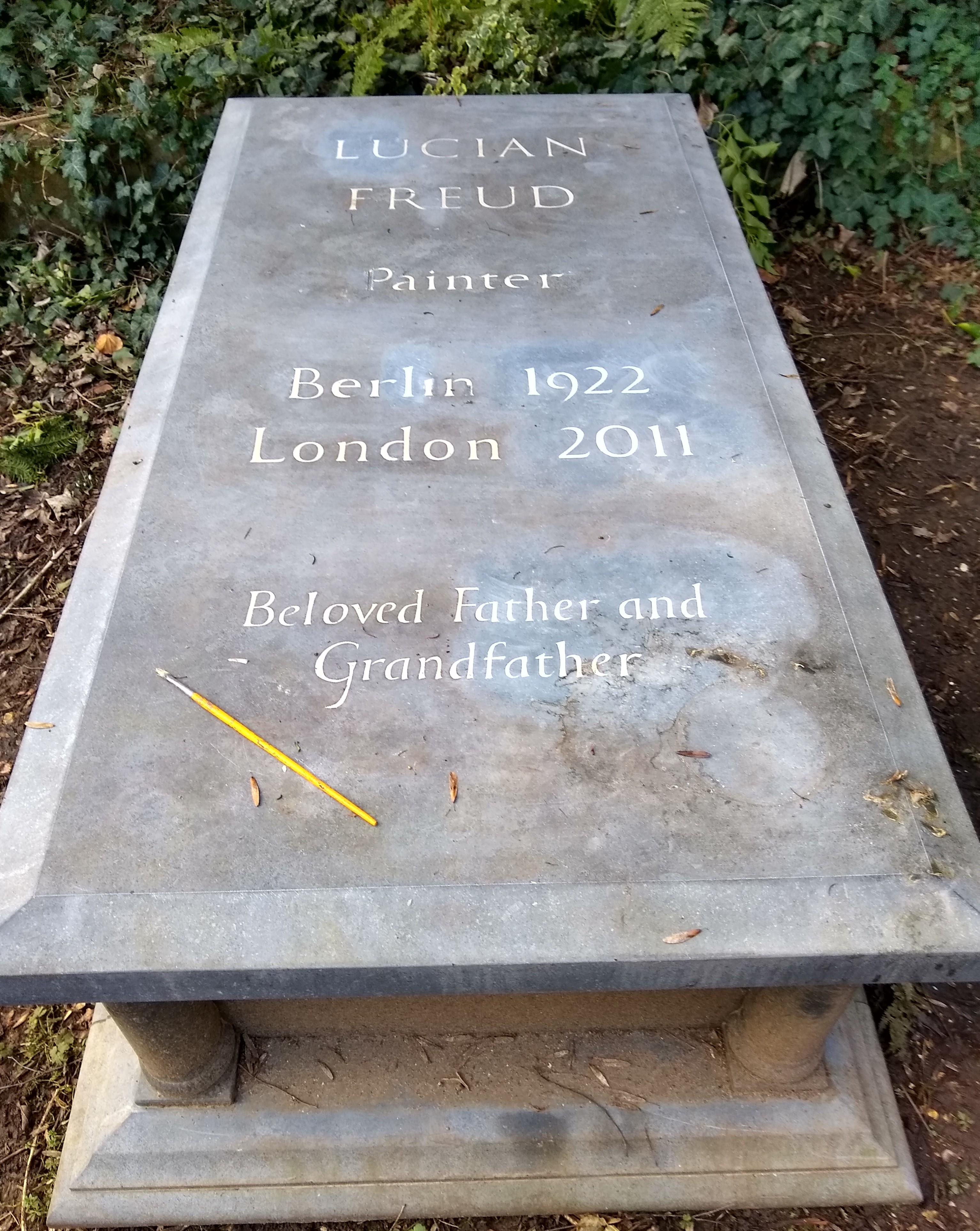|
List Of Large Triptychs By Francis Bacon
__NOTOC__ The Irish-born British artist Francis Bacon (1909–1992) painted 28 known large triptychs between 1944 and 1985–86.Sylvester, 107 He began working in the format in the mid-1940s with a number of smaller scale works before graduating to large examples in 1962. He followed the larger style for 30 years, although he painted a number of smaller scale triptychs of friend's heads, and after the death of his former lover George Dyer in 1971, the three acclaimed " Black Triptychs". Bacon was a highly mannered artist and often became preoccupied with forms, themes, images and modes of expression that he would rework for sustained periods, often for six or seven-year periods. When asked about his tendency for sequential or repetitive paintings, he explained how, in his mind, images revealed themselves "in series. And I suppose I could go long beyond the triptych and do five or six together, but I find the triptych is a more balanced unit."Sylvester, 100 He told critics that ... [...More Info...] [...Related Items...] OR: [Wikipedia] [Google] [Baidu] |
Three Studies For Figures At The Base Of A Crucifixion
''Three Studies for Figures at the Base of a Crucifixion'' is a 1944 triptych painted by the Irish-born British artist Francis Bacon. The canvasses are based on the Eumenides—or Furies—of Aeschylus's ''Oresteia'', and depict three writhing anthropomorphic creatures set against a flat burnt orange background. It was executed in oil paint and pastel on Sundeala fibre board and completed within two weeks. The triptych summarises themes explored in Bacon's previous work, including his examination of Picasso's biomorphs and his interpretations of the Crucifixion and the Greek Furies. Bacon did not realise his original intention to paint a large crucifixion scene and place the figures at the foot of the cross. The ''Three Studies'' are generally considered Bacon's first mature piece; Bragg, Melvyn. "Francis Bacon". ''South Bank Show''. BBC documentary film, first aired 9 June 1985. he regarded his works before the triptych as irrelevant, and throughout his life tried to suppres ... [...More Info...] [...Related Items...] OR: [Wikipedia] [Google] [Baidu] |
Centre Georges Pompidou
The Centre Pompidou (), more fully the Centre national d'art et de culture Georges-Pompidou ( en, National Georges Pompidou Centre of Art and Culture), also known as the Pompidou Centre in English, is a complex building in the Beaubourg area of the 4th arrondissement of Paris, near Les Halles, rue Montorgueil, and the Marais. It was designed in the style of high-tech architecture by the architectural team of Richard Rogers, Su Rogers, Renzo Piano, along with Gianfranco Franchini. It houses the Bibliothèque publique d'information (Public Information Library), a vast public library; the Musée National d'Art Moderne, which is the largest museum for modern art in Europe; and IRCAM, a centre for music and acoustic research. Because of its location, the centre is known locally as Beaubourg (). It is named after Georges Pompidou, the President of France from 1969 to 1974 who commissioned the building, and was officially opened on 31 January 1977 by President Valéry Giscard d'Esta ... [...More Info...] [...Related Items...] OR: [Wikipedia] [Google] [Baidu] |
Farah Pahlavi
Farah Pahlavi ( fa, فرح پهلوی, née Farah Diba ( fa, فرح دیبا, label=none); born 14 October 1938) is the widow of the last Shah of Iran, Mohammad Reza Pahlavi, and was successively Queen and Empress ('' Shahbanu'') of Iran from 1959 to 1979. She was born into a prosperous family whose fortunes were diminished after her father's early death. While studying architecture in Paris, France, she was introduced to the Shah at the Iranian embassy, and they were married in December 1959. The Shah's first two marriages had not produced a son—necessary for royal succession—resulting in great rejoicing at the birth of Crown Prince Reza in October of the following year. Diba was then free to pursue interests other than domestic duties, though she was not allowed a political role. She worked for many charities, and founded Iran's first American-style university, enabling more women to become students in the country. She also facilitated the buying-back of Iranian ant ... [...More Info...] [...Related Items...] OR: [Wikipedia] [Google] [Baidu] |
Tehran Museum Of Contemporary Art
Tehran Museum of Contemporary Art, ( Persian: موزه هنرهای معاصر تهران), also known as TMoCA, is among the largest art museums in Tehran and Iran. It has collections of more than 3,000 items that include 19th and 20th century's world-class European and American paintings, prints, drawings and sculptures. TMoCA also has one of the greatest collections of Iranian modern and contemporary art. The museum was inaugurated by Empress Farah Pahlavi in 1977, just two years before the 1979 Revolution. TMoCA is considered to have the most valuable collections of modern Western masterpieces outside Europe and North America. Background According to Farah Pahlavi, the former Empress of Iran, the idea for this museum happened when she was in conversation with artist Iran Darroudi during a gallery opening in the 1970s and Darroudi mentioned she wished there was a place to show work more permanently. The Tehran Museum of Contemporary Art museum was supposed to be a place ... [...More Info...] [...Related Items...] OR: [Wikipedia] [Google] [Baidu] |
Two Figures Lying On A Bed With Attendants
2 (two) is a number, numeral and digit. It is the natural number following 1 and preceding 3. It is the smallest and only even prime number. Because it forms the basis of a duality, it has religious and spiritual significance in many cultures. Evolution Arabic digit The digit used in the modern Western world to represent the number 2 traces its roots back to the Indic Brahmic script, where "2" was written as two horizontal lines. The modern Chinese and Japanese languages (and Korean Hanja) still use this method. The Gupta script rotated the two lines 45 degrees, making them diagonal. The top line was sometimes also shortened and had its bottom end curve towards the center of the bottom line. In the Nagari script, the top line was written more like a curve connecting to the bottom line. In the Arabic Ghubar writing, the bottom line was completely vertical, and the digit looked like a dotless closing question mark. Restoring the bottom line to its original horizontal p ... [...More Info...] [...Related Items...] OR: [Wikipedia] [Google] [Baidu] |
Sweeney Agonistes
''Sweeney Agonistes'' by T. S. Eliot was his first attempt at writing a verse drama although he was unable to complete the piece. In 1926 and 1927 he separately published two scenes from this attempt and then collected them in 1932 in a small book under the title ''Sweeney Agonistes: Fragments of an Aristophanic Melodrama''. The scenes are frequently performed together as a one-act play. ''Sweeney Agonistes'' is currently available in print in Eliot's ''Collected Poems: 1909–1962'' listed under his "Unfinished Poems" with the "Fragments of an Aristophanic Melodrama" part of the play's original title removed. The scenes are separately titled "Fragment of a Prologue" and "Fragment of an Agon". Composition The scholar Kinley Roby notes that Eliot started writing the scene "Fragment of A Prologue" in 1924 and wrote to his friend, the writer Arnold Bennett about his concept for the unfinished play. Bennett noted that Eliot wanted "to write a drama of modern life (furnished flat so ... [...More Info...] [...Related Items...] OR: [Wikipedia] [Google] [Baidu] |
Hirshhorn Museum And Sculpture Garden
The Hirshhorn Museum and Sculpture Garden is an art museum beside the National Mall, in Washington, D.C., the United States. The museum was initially endowed during the 1960s with the permanent art collection of Joseph H. Hirshhorn. It was designed by architect Gordon Bunshaft and is part of the Smithsonian Institution. It was conceived as the United States' museum of contemporary and modern art and currently focuses its collection-building and exhibition-planning mainly on the post–World War II period, with particular emphasis on art made during the last 50 years. The Hirshhorn is situated halfway between the Washington Monument and the US Capitol, anchoring the southernmost end of the so-called L'Enfant axis (perpendicular to the Mall's green carpet). The National Archives/National Gallery of Art Sculpture Garden across the Mall, and the National Portrait Gallery/Smithsonian American Art building several blocks to the north, also mark this pivotal axis, a key element of b ... [...More Info...] [...Related Items...] OR: [Wikipedia] [Google] [Baidu] |
Triptych Inspired By T
A triptych ( ; from the Greek adjective ''τρίπτυχον'' "''triptukhon''" ("three-fold"), from ''tri'', i.e., "three" and ''ptysso'', i.e., "to fold" or ''ptyx'', i.e., "fold") is a work of art (usually a panel painting) that is divided into three sections, or three carved panels that are hinged together and can be folded shut or displayed open. It is therefore a type of polyptych, the term for all multi-panel works. The middle panel is typically the largest and it is flanked by two smaller related works, although there are triptychs of equal-sized panels. The form can also be used for pendant jewelry. Beyond its association with art, the term is sometimes used more generally to connote anything with three parts, particularly if integrated into a single unit. In art The triptych form appears in early Christian art, and was a popular standard format for altar paintings from the Middle Ages onwards. Its geographical range was from the eastern Byzantine churches to the Ce ... [...More Info...] [...Related Items...] OR: [Wikipedia] [Google] [Baidu] |
Posthumous Portrait Of George Dyer, Self-portrait, And Portrait Of Lucian Freud
{{disambiguation ...
Posthumous may refer to: * Posthumous award - an award, prize or medal granted after the recipient's death * Posthumous publication – material published after the author's death * ''Posthumous'' (album), by Warne Marsh, 1987 * ''Posthumous'' (EP), by The Banner, 2001 * ''Posthumous'' (film), a 2014 American-German romantic comedy See also * * List of people known as the Posthumous * Posthumus (surname) * Postumus (other) Postumus (Marcus Cassianius Latinius Postumus, died 269) was a Roman usurper and founder of the Gallic Empire. Postumus may also refer to: *Agrippa Postumus (12 BC – 14 AD), son of Marcus Vipsanius Agrippa * Postumus Junior (died 268), alleged s ... [...More Info...] [...Related Items...] OR: [Wikipedia] [Google] [Baidu] |
Three Studies Of Lucian Freud
''Three Studies of Lucian Freud'' is a 1969 oil-on-canvas triptych by the Irish-born British painter Francis Bacon, depicting artist Lucian Freud. It was sold in November 2013 for 142.4 million, which at the time was the highest price attained at auction for a work of art when not factoring in inflation. That record was surpassed in May 2015 by Version O of Picasso's ''Les Femmes d'Alger'' series. Background Bacon and Freud and Leila were all friends but artistic rivals. Introduced in 1945 by artist Graham Sutherland, they swiftly became close friends who met frequently. The two artists painted each other several times, starting in 1951, when Freud first sat for Bacon. Two full-length triptychs of Freud by Bacon resulted. ''Three Studies of Lucian Freud'' is the later of the two; the first one, created in 1966, has not been seen since 1992. They form part of a series of large triptych portraits of Bacon's friends painted in the 1960s; other subjects include Isabel Rawsthorne, ... [...More Info...] [...Related Items...] OR: [Wikipedia] [Google] [Baidu] |
Lucian Freud
Lucian Michael Freud (; 8 December 1922 – 20 July 2011) was a British painter and draughtsman, specialising in figurative art, and is known as one of the foremost 20th-century English portraitists. He was born in Berlin, the son of Jewish architect Ernst L. Freud and the grandson of Sigmund Freud. Freud got his first name "Lucian" from his mother in memory of the ancient writer Lucian of Samosata. His family moved to England in 1933, when he was 10 years old, to escape the rise of Nazism. He became a British naturalized citizen in 1939. From 1942 to 1943 he attended Goldsmiths College, London. He served at sea with the British Merchant Navy during the Second World War. His early career as a painter was influenced by surrealism, but by the early 1950s his often stark and alienated paintings tended towards realism. Freud was an intensely private and guarded man, and his paintings, completed over a 60-year career, are mostly of friends and family. They are generally sombre ... [...More Info...] [...Related Items...] OR: [Wikipedia] [Google] [Baidu] |
Three Studies For A Portrait Of Lucian Freud
3 is a number, numeral, and glyph. 3, three, or III may also refer to: * AD 3, the third year of the AD era * 3 BC, the third year before the AD era * March, the third month Books * ''Three of Them'' (Russian: ', literally, "three"), a 1901 novel by Maksim Gorky * ''Three'', a 1946 novel by William Sansom * ''Three'', a 1970 novel by Sylvia Ashton-Warner * ''Three'' (novel), a 2003 suspense novel by Ted Dekker * ''Three'' (comics), a graphic novel by Kieron Gillen. * ''3'', a 2004 novel by Julie Hilden * ''Three'', a collection of three plays by Lillian Hellman * ''Three By Flannery O'Connor'', collection Flannery O'Connor bibliography Brands * 3 (telecommunications), a global telecommunications brand ** 3Arena, indoor amphitheatre in Ireland operating with the "3" brand ** 3 Hong Kong, telecommunications company operating in Hong Kong ** Three Australia, Australian telecommunications company ** Three Ireland, Irish telecommunications company ** Three UK, British telecomm ... [...More Info...] [...Related Items...] OR: [Wikipedia] [Google] [Baidu] |





_MET_DP273206.jpg)
